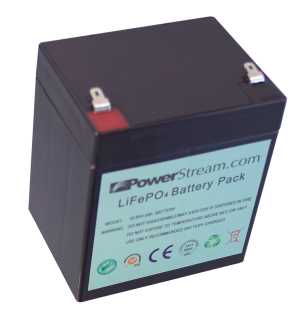
| July 19, 2018 | ||||||||||||||||||||||||||||||||||||||||||||||||||||||||||||||||||||||||||||||||||||||||||||||||||
12 Volt 4.5 Amp Hour Lithium Iron Phosphate Batteries designed as a lithium replacement for SLA Batteries |
|
|||||||||||||||||||||||||||||||||||||||||||||||||||||||||||||||||||||||||||||||||||||||||||||||||
 |
4.5 AH battery which can source up to 22 amps. Suitable lanterns, security systems, bicycle lights |
|||||||||||||||||||||||||||||||||||||||||||||||||||||||||||||||||||||||||||||||||||||||||||||||||
|
These li-ion cells and batteries not only
have high capacity, but can deliver high power. High-power lithium iron
phosphate batteries are now a reality. They can be used as storage cells or
power sources. LiFeP batteries are among the longest lived batteries ever developed. Test data in the laboratory show up to 2000 charge/discharge cycles. Our cells typically have more than 1000 cycles in service. These batteries are excellent for use in seasonal equipment because they do not need maintenance during the off-season. There is no equivalent to sulfation and the batteries can be stored in any state of charge without worry of degradation. We recommend 50-100% charge before storage. Another advantage is that running the battery completely down (i.e. leaving the lantern on for a week) will not damage the battery at all, unlike the SLA and Gel batteries. NOTE: these can be connected in parallel to give more amp-hour capacity, but they cannot be connected in series to give higher voltage.
Advantages and Benefits:
|
||||||||||||||||||||||||||||||||||||||||||||||||||||||||||||||||||||||||||||||||||||||||||||||||||
|
|
|
| |||||||||